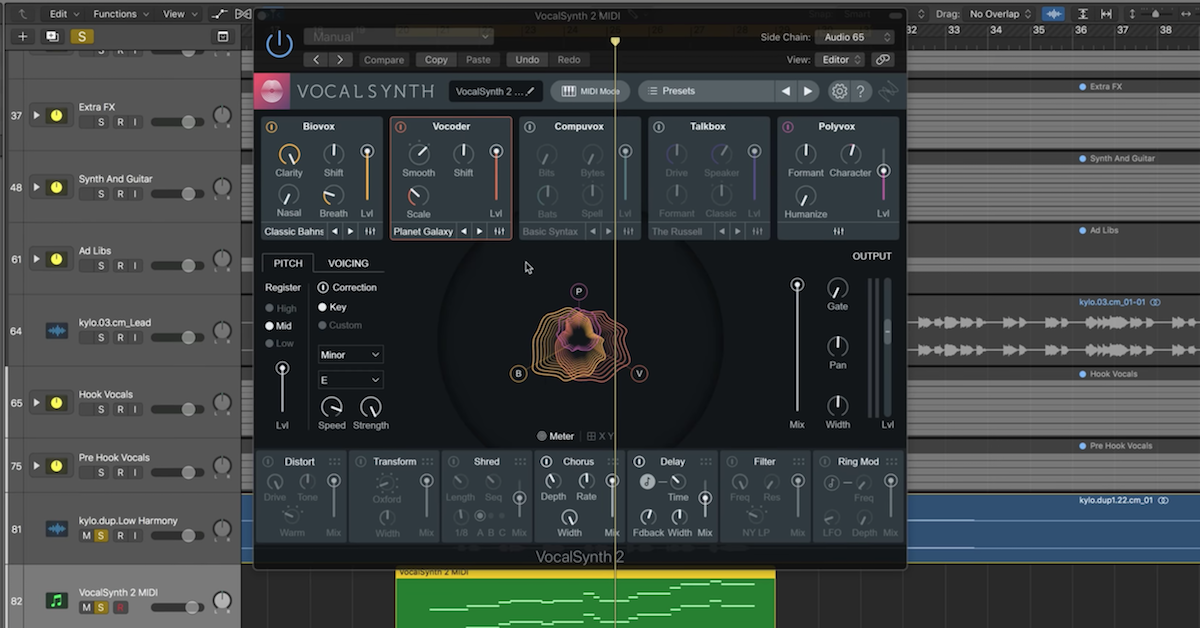An Introduction to Voltage and Current
Article Content
When I was first studying audio engineering, the emphasis was on the functions and uses of equipment such as microphones, EQ’s, and compressors. Teachers and even books would rarely delve deeper into the processes and construction of the tools we commonly find in the studio.
In fairness, a complete understanding of how studio hardware or software works can take years. Necessary subjects and skills involve physics, calculus, programming, and more.
While there are countless audio engineers recording, mixing, and mastering music, soundtracks, SFX, etc., who do not know, nor need, a more technical understanding of their craft, there are many of us who would benefit from a clearer sense of what our actions in the studio actually do.
With that in mind, this article, and several more in a continuing series, will help shed some light and hopefully clear up any misconceptions on core concepts at the heart of audio engineering.
Let’s start with the unfortunate fact that one’s understanding of electricity exists on a spectrum between two extremes.
On one end is the commonly found water analogy of electricity, which converts the properties (some better than others) of electricity, which we can only interact with by experiment, into the properties of a physical system we can directly see and touch. The other end of the spectrum is an understanding of quantum physics.
To understand what happens without any amount of abstraction or analogy is a rabbit hole. Fortunately we can pick a point between these two extremes to give us as much information as we need.
Charge
A conversation about electricity can’t be started without understanding the basic particles involved. We begin by identifying that in any atom there are three basic particles: the proton, neutron, and electron.
For our discussion we can ignore the neutron (the neutron has never been mentioned in any physics or electrical engineering texts that I have read). We are left with the positively charged proton and negatively charged electron.
What makes the proton “positive” and the electron “negative”? From our vantage, we have no idea (that is where deeper physics would come in). What we do know, what is relevant to our understanding, is that the opposite charges of the proton and electron attract each other such that if one of each is brought into close proximity to the other they would balance each other’s charges.
Protons live at the heart, or nucleus, of an atom. Electrons orbit this nucleus from quite a distance (relative to the size of the particles).
The classical view of these orbits looks very similar to the way planets orbit our sun. It’s important to know that we now understand this is incorrect. Still, it’s an adequate framework to help us understand the foundations of electricity so that we can move on to other things.
What is important, and still true in the modern and classical model of the atom, is that some electrons orbit the nucleus farther away from others. The electrons closest to the nucleus are bound to the protons there very tightly. They are of no use to us. The ones farther away, however, aren’t as strongly attached. The pull and attraction of electrons and protons dissipates with distance. These distance electrons are the ones we’re looking for.
Current
One of the fundamental consequences of electricity and electronic circuits is that we’re trying to move energy from one point to another.
You plug in your amp to the wall outlet to move energy from the power cord to the speaker. Similarly, you plug in your guitar to your amp to move energy from your strings to the speaker. So, what moves that energy? The answer is charge, which is why I wanted to start the discussion with the previous section.
We have a unit of electrical charge named the coulomb. Now, electrons are extremely small, so if we stated that each electron had one coulomb of charge, we’d be dealing with astronomical numbers. Instead, we designate that approximately 6.24 x 1018 electrons together is one coulomb of charge. That means that each electron has 1.602 x 10-19 coulombs of charge. The reason for these very specific numbers takes us further down the rabbit hole. Instead, we can jump up a level of abstraction and create a new term: ampere.
The ampere, or as we’re more used to saying, amp, is a rate of how many electrons, or charges, pass through a given point in one second. Specifically, when one coulomb of charges passes through the given point in one second, that is one amp.
1 amp = 1 coulomb/second
It should be noted that the amp does not indicate the speed at which the electrons travel, but rather the amount.
What’s the difference? Imagine a five-lane highway with cars traveling at a speed such that I can count ten cars passing me every second. If I then went to a one-lane highway with cars traveling at the same speed, I’d count 2 cars every second. That’s the difference between rate and speed. In reality, the individual electrons do not move very fast at all. So what moves the charges from one place to another?
Voltage
In just about every engineering book you can find current discussed first. That’s because it’s much easier to visualize electrons moving in a wire than it is to visualize what voltage is.
To understand what motivates electrons to flow, let’s think about a battery. Via chemistry, a battery has one part with excess electrons and one part with a deficit of electrons. Within the battery itself the electrons are not able to move to the section with a deficit. It’s important to realize that it took energy to put the electrons in that state (via a chemical process). So now, in a similar way as an object lifted off the ground has potential energy, the electrons have electric potential. If you were to connect the two parts of the battery, the electrons would start traveling to the section with the electron deficit.
All energy, regardless of the type, has as its unit the joule. We already mentioned that it took energy to create that electron imbalance, and now those electrons have the ability to release that energy. We could talk about the amount of energy each electron were capable of delivering, but we’d again be working with enormous numbers. Instead, let’s use the coulomb again and think about how much energy would be associated with each coulomb of electrons. This ratio, the joule per coulomb, is the volt*.
1 volt = 1 joule/coulomb
Intuitively this makes sense. If you strike the strings hard on your guitar, the pickup will output more voltage than if you had played softly. If you sing louder into the mic, more voltage will be seen by your mic preamp.
Similarly, if you turn up your guitar amplifier or power amp to your monitors, you are putting more voltage, and therefore more energy, into the system. More energy means more ability to do more work, like make your speakers move a lot farther and push a lot more air.
The table below will give you an idea of what voltages are seen in typical pro audio environments.
Microphone: .002 V to 1 V Instrument: .1 V to 1 V Consumer: .316 V Pro Line Level: 1.23 V
Understanding now what the term volt means, you can see that a microphone outputs less energy than a guitar, which in turn outputs less energy than the cables to your studio monitors.
You might ask yourself now what amps are associated with the above list. Or how power, which you see used to differentiate speakers, monitors, and amplifiers, comes into play.
To get into that we’ll define resistance and impedance in our next article, and establish the relationships between them and voltage, current, and power.
* Note that there are more formal definitions of voltage, such as integration (adding up) an electric field over a distance for static charges. You will also find that voltage is defined between two points. No voltage exists without a reference point. While this is certainly true and important information, in electrical engineering all of that is understood and not explicitly stated. For instance, it would be more correct to say that there is an electric potential difference of .05 volts across the positive and negative terminals of a guitar pickup. However, in engineering, you would be more likely to hear that the guitar pickup is output .05 volts.






